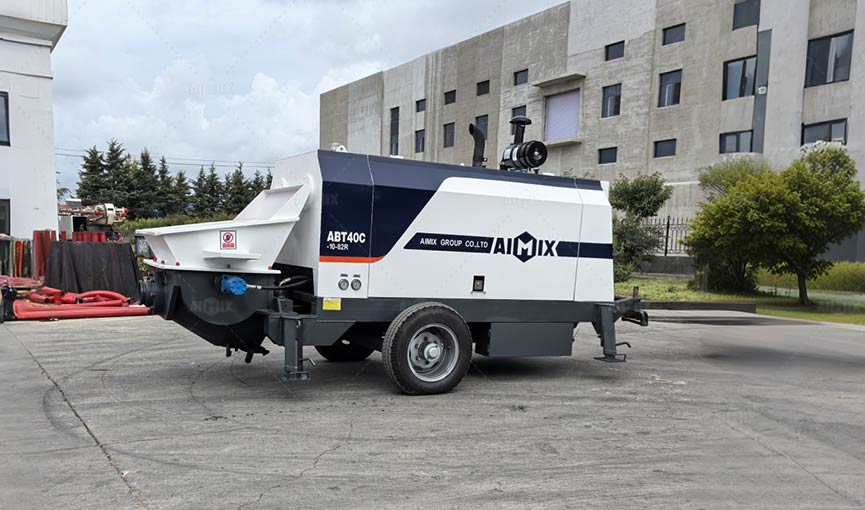Concrete pumping technology has revolutionized modern construction, offering efficiency and precision in material placement. Among the most utilized options, trailer concrete pumps and boom pumps serve distinct purposes, each excelling in different project scenarios. The choice between these two machines hinges on factors such as mobility, pumping capacity, setup time, and cost implications. Understanding their structural differences and operational efficiencies is crucial for contractors seeking to optimize performance while managing costs effectively. Whether for high-rise developments or intricate residential pours, selecting the right concrete pumping machine can significantly impact construction timelines and overall productivity.
Structural and Operational Disparities
Design and Mobility
Trailer concrete pumps and boom pumps differ significantly in structure and mobility, influencing their deployment in varied construction environments.
-
Trailer Pumps: Compact and towable, these pumps require external towing vehicles for relocation. Their streamlined design facilitates maneuverability in confined or uneven terrains, making them indispensable for small-scale or intricate projects.
-
Boom Pumps: Truck-mounted and equipped with an articulating boom arm, boom pumps extend across expansive job sites. This integration of mobility and mechanized reach renders boom pumps superior for large-scale projects demanding extensive coverage and rapid placement.

Pumping Mechanism
Concrete delivery mechanisms also set these two pump types apart.
-
Trailer Pumps: Rely on flexible hoses that require manual positioning, ensuring controlled and precise placement but demanding significant labor input. The absence of an automated arm restricts their efficiency in high-rise applications.
-
Boom Pumps: Incorporate an advanced hydraulic system with a multi-section boom, enabling seamless concrete distribution with minimal manual intervention. Their ability to pump at higher pressures through rigid pipelines ensures uninterrupted flow, enhancing productivity in large-scale construction settings.
Performance and Efficiency Metrics
Concrete Output and Reach
Performance discrepancies between trailer and boom pumps for sale manifest in concrete output and delivery range.
-
Trailer Pumps: Typically operate at lower pumping capacities, ranging between 30 to 80 cubic meters per hour. Their horizontal reach is constrained by hose length, making them optimal for ground-level or moderately elevated applications.
-
Boom Pumps: Offer significantly higher output, with capacities exceeding 100 cubic meters per hour. Their telescopic and articulated booms facilitate vertical placements exceeding 50 meters, proving indispensable for high-rise projects and large-scale infrastructure.
Energy Consumption and Setup Time
Efficiency extends beyond performance metrics to energy utilization and operational agility.
-
Trailer Pumps: Powered by diesel or electric engines, they consume relatively less fuel but require meticulous setup, including hose arrangement and manual guidance. Their labor-intensive configuration prolongs deployment time.
-
Boom Pumps: Though energy-intensive due to hydraulic operation, they offer expedited setup. The automated boom reduces reliance on manual labor, translating into faster job completion and optimized workforce allocation.

Application Suitability and Cost Implications
Ideal Use Cases
Selecting between a trailer pump and a boom pump hinges on project requirements.
-
Trailer Pumps: Excel in residential foundations, narrow alleyways, and projects with accessibility constraints, where maneuverability and precision outweigh speed.
-
Boom Pumps: Dominate in commercial high-rises, bridge construction, and large-scale concrete pours, where rapid, extensive placement ensures adherence to tight schedules.
Economic Considerations
Cost dynamics are pivotal in pump selection.
-
Trailer Pumps: More affordable upfront, they present a cost-effective solution for contractors handling medium-scale projects. Their lower maintenance and operational costs further contribute to long-term savings.
-
Boom Pumps: Demand substantial initial investment and maintenance due to their complex hydraulic systems. However, their ability to cover vast areas swiftly can offset expenses through increased efficiency and reduced labor dependency.
Both trailer and boom concrete pumps offer distinct advantages tailored to specific construction demands. While concrete trailer pumps prioritize precision and adaptability, boom pumps deliver unmatched speed and reach. Selecting the right pump necessitates a thorough assessment of project scope, budgetary constraints, and efficiency imperatives.

Comments
No comments yet. Be the first to react!